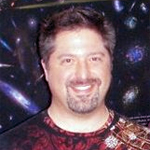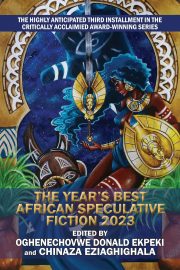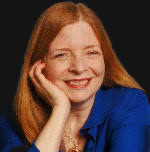Ten Terrific Resources for
Writing Space-Based Hard Science Fiction
by Mike Brotherton
 Hard science fiction is science fiction without mistakes in the science, at least not very big ones. You can still be very speculative and far out, but you can’t violate what we know about how the universe works without spoiling the suspension of disbelief. While there’s a lot we don’t know, there’s wikipedias full of what we do, and it can be intimidating even if you’ve got a PhD in a scientific subject. I’m a professional astronomer, but there’s plenty of room for me to screw up when it comes to geology, biology, or any of another half dozen subjects.
Hard science fiction is science fiction without mistakes in the science, at least not very big ones. You can still be very speculative and far out, but you can’t violate what we know about how the universe works without spoiling the suspension of disbelief. While there’s a lot we don’t know, there’s wikipedias full of what we do, and it can be intimidating even if you’ve got a PhD in a scientific subject. I’m a professional astronomer, but there’s plenty of room for me to screw up when it comes to geology, biology, or any of another half dozen subjects.
I would like to share ten resources, more or less, that I think are really terrific when it comes to getting the science right. These will be biased toward my areas of expertise, and will span books, websites, and software. Old-fashioned books first.
1. Mallove, Eugene F., and Matloff, Gregory L. The Starflight Handbook: A Pioneer’s Guide to Interstellar Travel, Wiley Science Editions. New York: Wiley, 1989. This book is one-stop shopping for nearly every serious idea put forward in the last few decades, although it is not 100% complete (e.g., the Alcubierre Drive is missing). The relativistic rocket equation is a bonus. Maybe you could search dozens of wiki pages for the same information, but this is a book worth having on the shelf.
2. Stine, G. Harry. Living in Space: A Handbook for Work & Exploration Beyond the Earth’s Atmosphere. 1st ed. New York: M. Evans and Co., 1997. This is the book I go to when I’m worrying about what kind of accelerations humans can survive. Or radiation doses. Or any of a bunch of dangerous things my characters might encounter in space. (Also worth checking out: Mullane, R. Mike. Do Your Ears Pop In Space and 500 Other Surprising Questions About Space Travel. Wiley, 1997.)
3. Sheffield, Charles. Borderlands of Science. This book is a readable summary of a number of areas of science: physics, astronomy, chemistry, biology, etc., with an emphasis on topics most likely to concern a science fiction writer. The solar system and space flight both get long chapters to themselves, for example. Chaos theory gets a big chapter too — bigger than it deserves probably — but is interesting enough. This book is a handy starting place for an sf writer, but doesn’t really go into enough detail to do more than spark a story. The bibliography is therefore unfortunately thin (but at least there is one!).
4. Gillet, Stephen, and Bova, Ben. World Building. Gillet and Bova wrote a pretty nice book on issues of world building that come up when constructing an alien planet. While this is a useful book, it’s starting to get a bit dated given all the discoveries about actual extra-solar planets out there, so be aware that the possibilities for alien worlds are growing and perhaps broader than suggested here.
5. To keep current, we move to the web and there are several places to go for information about actual planets (and systems of planets) around real stars. One of my favorites is exoplanets.org. Other nice sites are the Extrasolar Planets Encyclopedia, Planet Quest, and The Planetary Society’s Catalog of Exoplanets. We’re now at a stage where you can’t just make up anything you want about some star systems, but what we really know may be stranger and more interesting than imagination.
6. How do you get to those planets? Well, you need maps for one thing. One great website with 3-D starmaps, among many useful pages, is Winchell Chung’s Project Rho. SolStation.com is another great site. ChView is a third.
7. OK, you have your starmaps, planet information, interstellar starship, but there are a lot of details still to worry about, like how to move around in star systems and orbit planets. There’s a nice webpage with an overview of orbital mechanics for you.
8. Maybe the we haven’t found any planets around a particular star of interest, or you want to make up your own star system. Any star system must conform to the laws of planetary motion, and those planets, once placed, will have a narrow range of allowable temperatures, atmospheres, and other properties. A program like Astrosynthesis may be what you need. As a professional astronomer, I can do this myself, but it really isn’t so complicated that software can’t. There are others like StarGen out there, as well.
9. There are a number of blogs out there, including my own at www.mikebrotherton.com, that regularly cover space and related science fiction topics. Some I regularly visit include Bad Astronomy, Centauri Dreams, and Cosmic Variance. Space.com and universetoday.com are two space news websites I like. When I host my annual Launch Pad Astronomy Workshop for Writers (which is also a terrific resource but reaches only a limited audience, taking applications every March or until I run out of funding), I often create various webpages of resources like my Hard SF Bookshelf or Online Astronomy Resources for Writers (that overlaps this list somewhat, but covers many topics and includes some video lecture links).
10. Finally, I do think it’s useful to read good examples of hard science fiction. There is some variation depending on audience, from the hardcore science fiction fan to the general public. Stanley Schmidt at Analog ensures the science is good there. I created an anthology of astronomy-themed science fiction that’s online for free: Diamonds in the Sky. Andy Fraknoi has compiled a list of stories with good science. David Hartwell and Kathryn Cramer have a semi-recent anthology called the Hard SF Renaissance that I can recommend.
This is just my own biased list. There are lots of great resources out there, but these are ones that I think are useful and I’ve used many of them myself. Don’t forget wikipedia either, as it has really gotten pretty good on a lot of scientific topics, or youtube.com, which has clips from a lot of good documentaries. If you’ve got other resources you love, I encourage you to leave a comment and suggest them.
—
 Originally from the St. Louis area, Mike Brotherton got his PhD in astronomy from the University of Texas in 1996, and held positions at Lawrence Livermore National Laboratory and Kitt Peak National Observatory before coming to Laramie. His specialty is studying the supermassive black holes in the centers of galaxies and how they shine when in the active phase. He is also interested in the relationship between such active galactic nuclei (AGN) and their host galaxies, and their mutual evolution. His work is primarily observational, and he uses a wide assortment of telescopes/observatories operating across the electromagnetic spectrum including WIRO, McDonald, IRTF, KPNO, Lick, Keck, Gemini, the VLT, Hubble, Chandra, and the VLA. He also makes use of data archives such as the Sloan Digital Sky Survey. In addition to being a scientist, he is a science fiction writer, author of the well-received science fiction novels Star Dragon (2003) and Spider Star (2008) from Tor Books. He is also the founder of the NASA-funded Launch Pad Astronomy Workshop for Writers, which brings a dozen award-winning professional writers to Wyoming every summer. He blogs at www.mikebrotherton.com and loves his fierce cat, Sita.
Originally from the St. Louis area, Mike Brotherton got his PhD in astronomy from the University of Texas in 1996, and held positions at Lawrence Livermore National Laboratory and Kitt Peak National Observatory before coming to Laramie. His specialty is studying the supermassive black holes in the centers of galaxies and how they shine when in the active phase. He is also interested in the relationship between such active galactic nuclei (AGN) and their host galaxies, and their mutual evolution. His work is primarily observational, and he uses a wide assortment of telescopes/observatories operating across the electromagnetic spectrum including WIRO, McDonald, IRTF, KPNO, Lick, Keck, Gemini, the VLT, Hubble, Chandra, and the VLA. He also makes use of data archives such as the Sloan Digital Sky Survey. In addition to being a scientist, he is a science fiction writer, author of the well-received science fiction novels Star Dragon (2003) and Spider Star (2008) from Tor Books. He is also the founder of the NASA-funded Launch Pad Astronomy Workshop for Writers, which brings a dozen award-winning professional writers to Wyoming every summer. He blogs at www.mikebrotherton.com and loves his fierce cat, Sita.


